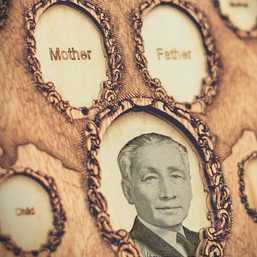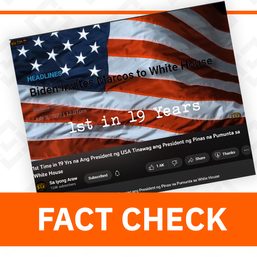SUMMARY
This is AI generated summarization, which may have errors. For context, always refer to the full article.
![[ANALYSIS] PNoy’s legacy: We were no longer the ‘sick man of Asia’](https://www.rappler.com/tachyon/2021/06/tl-pnoy-economic-legacy-sq.jpg)
PNoy was right all along: good governance is good economics.
There are many ways to remember the legacy of former President Noynoy Aquino or PNoy, who suddenly, shockingly died last Friday, June 24 at age 61.
He bravely brought China to court and won. He made significant progress in the Mindanao peace process and the transition to Bangsamoro. He led under a distinctive anti-corruption banner that renewed many people’s confidence in government.
But in this piece I want to revisit what I consider to be his biggest legacy: revitalizing the Philippine economy and putting it back on track.
I’d be the first to admit not everything was perfect. Joblessness and poverty declined slowly, and inequality hardly budged. But PNoy’s leadership inspired confidence in our economy like never before, paving the way for huge waves of spending and investment and growth.
I even daresay our economy peaked during PNoy’s time. You don’t have to take my word for it: the numbers speak for themselves.
Growth accelerated
First and foremost, the Philippine economy flourished during PNoy’s time.
Figure 1 shows that the country’s total output, measured by gross domestic product or GDP, grew by an average pace of 6.2% yearly from 2010 to 2015. That’s the highest average GDP growth rate among the presidents since the 1950s.
Although average growth continued to rise in the early years of Duterte, this is chiefly due to the high growth during Aquino’s final years in office — economic “momentum,” if you will.
At one point, in the last quarter of 2012, growth even reached a whopping 7.8% — a record still not beaten to this day. More remarkably, yearly growth never fell below 6% for five consecutive years starting 2012 — a feat no previous administration since the 1950s was able to achieve.
Because of all this, PNoy laid the foundation for the Philippines’ first ever post-war “growth acceleration,” based on criteria set by economists in a 2005 paper.
Figure 1.
People like to diss growth as merely academic, something hardly felt by ordinary people. But high, sustained growth during PNoy’s time was significant in three ways:
First, such growth created more opportunities for people to get jobs and earn higher incomes, and for businesses to expand their operations and thrive.
Second, on the international stage, more and more people became convinced that we were no longer the “sick man of Asia.” As early as 2012, we were ranked among the world’s “breakout nations.” We’ve come a long way from the economic nadir during martial law. (READ: Marcos years marked ‘golden age’ of PH economy? Look at the data)
Third, the drivers of growth also shifted dramatically — a fact not many people may have noticed or appreciated. Apart from private consumption by households, investments also thrived — think new machinery, equipment, and construction projects which are crucial for future growth (Figure 2).
At the same time, among the various sectors, manufacturing and services propelled growth like never before (Figure 3). The business process outsourcing (BPO) sector stood out: over PNoy’s term both its employees and revenues more than doubled.
Figure 2.
Figure 3.
Inflation was low, stable
High growth was accompanied by record low inflation. From an average inflation rate of 9.7% in the 1990s and 5% in the 2000s, PNoy was able to bring inflation all the way down to a little over 1% by 2015 (Figure 4).
Low inflation simply means that prices rose very slowly during PNoy’s time, nearly grinding to a halt. As a result, Filipino households could buy more goods and services with their rising incomes. (Contrast this with the spells of high inflation in 2018 owing to rice shortages and the Train Law, as well as the pork price increases in the middle of the pandemic.)
Figure 4.
Drop in joblessness
Joblessness continued its long-run drop during PNoy’s term. From 8% before PNoy took office, the unemployment rate dropped to 6.1% when he stepped down in 2016 (Figure 5).
Conversely, he was able to bring the employment rate to as high as 94.4% in the last quarter of 2015 — a record high at the time. Put another way, there were more than five million more people employed when he left office than when he entered it.
Meanwhile, the underemployment rate — which comprises people with jobs but want to work more hours or pay — also continued its long-run decline, albeit at a much slower pace than unemployment.
Admittedly, gains in the labor sector could’ve been larger: impressive economic growth did not spur job creation nearly enough. At least, there were no huge spikes of unemployment during PNoy’s term.
Figure 5.
Fiscal space expanded
PNoy also set the government’s finances in order.
His predecessor had planted the seeds of fiscal consolidation with tax reform measures like the Expanded Value-Added Tax Law. But PNoy himself ramped up government revenues with his own policies, like the Sin Tax Reform Law of 2012, which helped expand the Department of Health’s budget fourfold. Said law also passed despite great opposition from the tobacco lobby and other interest groups, and notwithstanding PNoy’s own smoking habit.
As a result, government revenues as a share of GDP steadily rose from 13.4% in 2010 to 15.8% in 2015, translating to about a trillion pesos in extra funds.
With more cash in hand, PNoy was able to run smaller and smaller budget deficits, to the point that he pulled off record budget surpluses from 2013 to 2015 (Figure 6). In effect, government then was earning more than it was spending.
Figure 6.
Shrinking deficits can be good or bad, depending on how you look at them. But at least they eased pressures on the PNoy administration to borrow. Hence, the country’s outstanding debt went down from about half of GDP in 2010 to a little over 40% in 2016 (Figure 7). Money intended for repaying past debts was freed up for key programs.
To the extent that we still borrowed, we relied less and less on external borrowings and more on domestic borrowings. Increasingly many Filipinos lent money to the government: they had money to spare (partly due to economic growth) and were confident that government can repay in the future.
Figure 7.
Infrastructure spending boomed
Significant fiscal legroom allowed PNoy to expand key projects and programs.
For instance, his government poured money into long-neglected or long-delayed public works. This is reflected in total infrastructure disbursements as a percent of GDP, which rose by 2.5 times during his term (Figure 8). At the same time, by pursuing public-private partnerships or PPPs, PNoy also managed to marshal private money to build public works, thus reducing fiscal pressures on the Treasury.
Figure 8.
I wrote recently that many of the Duterte administration’s Build, Build, Build projects — such as Skyway Stage 3 and the Cavite-Laguna Expressway — are actually carryovers from PNoy’s time. (READ: 10 Build, Build, Build projects that started before Duterte)
Of course we all know of the underspending issue that plagued PNoy. The problem was that, despite the availability of more funds, many agencies could not spend fast enough — inducing PNoy to try to hasten disbursements with the Disbursement Acceleration Program (DAP).
DAP was eventually struck down by the Supreme Court as unconstitutional, insofar as it allegedly meddled with Congress’ power of the purse. But PNoy learned to accept this decision. To this day, though, chronic underspending continues to afflict government.
Business climate awash with optimism
Impressive growth, paired with PNoy’s good governance, boosted confidence in our economy not only among foreigners but also among Filipinos.
To begin with, the stock market blossomed during PNoy’s time, reaching record high after record high as measured by the Philippine Stock Exchange Index (Figure 9).
Figure 9.
Numerous credit rating upgrades also happened during PNoy’s time (Figure 10). In 2013, we earned an “investment grade” rating for the first time ever, thanks to Fitch (from BB+ to BBB-).
Credit rating upgrades basically mean that our government was deemed significantly more creditworthy than before PNoy came into office, and this has since allowed us to borrow from creditors on easier terms. By former finance secretary Cesar V. Purisima’s count, there were a total of 24 upgrades during PNoy’s time, making us “the world’s most upgraded sovereign back then.”
This put enormous pressure on Duterte’s economic managers to achieve credit rating upgrades of their own. But so far, just a year before Duterte steps down from office, they’ve managed just a handful of upgrades.
Figure 10.
Foreigners, too, were buoyed by economic optimism, and their direct investments in the country grew by nearly eightfold during PNoy’s time (Figure 11). Since then, however, FDI inflows have languished.
Figure 11.
Finally, the Philippines also improved markedly in various global rankings — be it in competitiveness, ease of doing business, economic freedom, or corruption perception (Figure 12).
Figure 12.
In short, a virtuous cycle was at play: economic confidence led to growth, which led to more confidence and more growth, and so on and so forth.
Hunger, poverty dropped
Stellar growth benefited the poor and marginalized, too, as shown by the declines in hunger and poverty.
Before PNoy’s time, the hunger rate rose steadily, reaching about a fifth of households. But this almost halved by late 2015 (Figure 13).
Figure 13.
As for poverty, more than a fourth of Filipinos were poor in 2009. PNoy was able to bring this down to a fifth by 2015 (Figure 14). In 2016, they reported that 7.7 million people have been lifted out of poverty since 2010.
The proportion of poor people went further down to about a sixth in 2018, but that was arguably driven by the growth momentum during PNoy’s time. Indeed, such a poverty drop could’ve been larger had it not been for the anti-poor policies of the Duterte administration.
Figure 14.
Admittedly, the drops in hunger and poverty could’ve been larger given the impressive economic growth during PNoy’s term. But besides short-run poverty PNoy was also concerned with long-run poverty, specifically the transmission of it across generations.
In this vein, PNoy poured significant sums into the Pantawid Pamilyang Pilipino Program (4Ps). Under his watch the number of 4Ps beneficiaries grew by more than fourfold (Figure 15). Despite implementation issues and lower coverage of the poor of late, 4Ps has demonstrably improved the welfare of poor children.
Figure 15.
Landmark reforms pushed through
Besides impressive economic outcomes, PNoy’s achievements are also evident in the landmark reforms he managed to pull off.
In 2012, PNoy signed the Reproductive Health Law after it languished it the legislative mill for more than a decade, and amid strong opposition from the Catholic Church which supported PNoy’s mother and his own rise to power.
In 2013, PNoy signed the K-12 Law which, among other things, added two years in the basic education system — all in an effort to align ourselves with other countries’ standards and deepen our investments in human capital.
Also in 2013, PNoy through the Department of Budget and Management implemented Bottom-Up Budgeting, which sought to empower civil society to participate in the budget process and mitigate local patronage politics.
In 2015, PNoy signed the Philippine Competition Act which, for the first time, significantly empowered government to keep a level playing field across various sectors.
The jury is still out on how effective these and many other reform measures have been. Some even continue to be lambasted to this day. But far better to see unpopular measures motivated by sound policy goals than popular measures that undermine our democratic institutions or even kill people.
Good governance is good economics
It’s quite amazing, really, how much PNoy was able to turn around the Philippines from a veritable “sick man of Asia” to a “breakout nation,” Asia’s next “tiger economy,” and the “Darling of Asia” in his short six years in office.
Sure, there were problems in terms of the inclusiveness of growth (joblessness and poverty didn’t drop fast enough). But don’t let the perfect be the enemy of the good. No one can deny that PNoy successfully put the economy on a new, exciting trajectory — one that gave us real hope that we might become a rich (or at least upper-middle income) country sooner than we all expected.
Lamentably, many of the gains of PNoy’s administration — from economic growth to unemployment and foreign direct investments — have been reversed by the current one. At present, we’re living in the country’s worst recession since records began after World War II. And it’s not all because of the pandemic. (READ: Duterte’s legacy: We’re the ‘sick man of Asia’ again)
In 2015, during his final State of the Nation Address, PNoy had already worried about the continuation of his government’s legacy. He wondered whether the “transformation” under his watch was permanent or “simply a brief and lucky deviation from a long history of failure.” He posed this question in Filipino: “Will we lose all that we have built — all that we have worked hard for — in one election?”
Fast-forward to 2021, our answer to PNoy is: not all of your economic legacy was lost, but, unfortunately, a sizable part of it was.
Beyond glowing economic statistics, perhaps PNoy’s true, more lasting legacy is that he proved to Filipinos that — as he and his Cabinet officials would often say then — “good governance is good economics.” May this mantra guide us all as we choose the next set of leaders in 2022 and beyond. – Rappler.com
JC Punongbayan is a PhD candidate and teaching fellow at the UP School of Economics. He served in government during PNoy’s term for over 2 years. His views are independent of the views of his affiliations. Follow JC on Twitter (@jcpunongbayan) and Usapang Econ (usapangecon.com).
Add a comment
How does this make you feel?
![[In This Economy] Is the Philippines quietly getting richer?](https://www.rappler.com/tachyon/2024/04/20240426-Philippines-quietly-getting-richer.jpg?resize=257%2C257&crop=194px%2C0px%2C720px%2C720px)
![[In This Economy] A counter-rejoinder in the economic charter change debate](https://www.rappler.com/tachyon/2024/04/TL-counter-rejoinder-apr-20-2024.jpg?resize=257%2C257&crop=267px%2C0px%2C720px%2C720px)
![[Vantage Point] Joey Salceda says 8% GDP growth attainable](https://www.rappler.com/tachyon/2024/04/tl-salceda-gdp-growth-04192024.jpg?resize=257%2C257&crop_strategy=attention)
![[ANALYSIS] A new advocacy in race to financial literacy](https://www.rappler.com/tachyon/2024/04/advocacy-race-financial-literacy-April-19-2024.jpg?resize=257%2C257&crop_strategy=attention)




![[EDITORIAL] Marcos, bakit mo kasama ang buong barangay sa Davos?](https://www.rappler.com/tachyon/2023/01/animated-marcos-davos-world-economic-forum-carousel.jpg?resize=257%2C257&crop_strategy=attention)

There are no comments yet. Add your comment to start the conversation.